History of International collaborations in Antarctica
To understand the crucial role of international collaborations relating to the advancements in scientific research in Antarctica this project investigates the aspects of the development of these collaborations through the course of history in Antarctica.
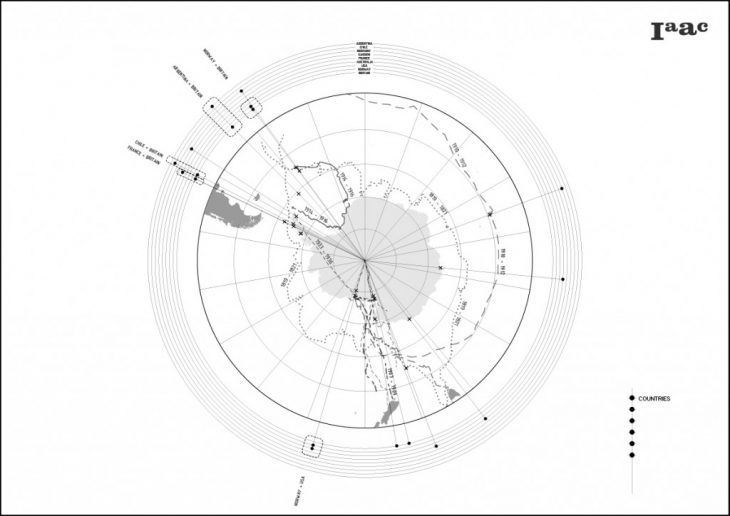
Historic voyages to Antarctica
The ‘scientific revolution’ during the ‘enlightenment’ of the late seventeenth and eighteenth centuries Europe led to rapid scientific and technological developments due to the growing international collaborations between individuals with a common interest. This is the period when scientists began to collaborate to study global phenomena. Following this, the nineteenth-century voyages gave momentum to the idea of undertaking international scientific investigations in the Antarctic.
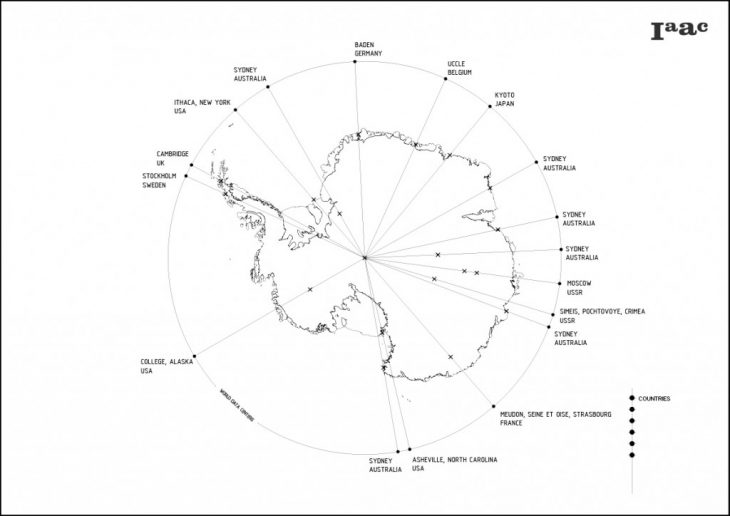
Bases and world data centers established during the International Geophysical Year 1957-58
The International Geophysical Year 1957-58 marks an important milestone in the history of Antarctica by creating an opportunity for wide-scale international co-operation in physical sciences. The Antarctic Treaty and the Scientific Committee on Antarctic Research (SCAR) established during this year sets the framework which fosters international science in powerful ways. The treaty gives its member nations the confidence to do complex international projects that require the full-time commitment of each partner for project success. Several permanent research bases were set up across the continent. The enormous data generated from these bases provided for the development of World Data Centres across the globe.
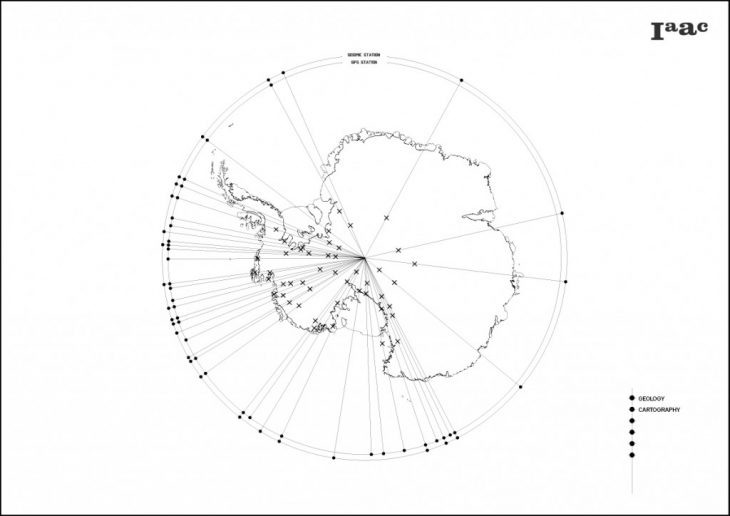
The network of GPS and seismic stations for PoleNET
In 2007 twenty-eight countries collaborated in the Polar Earth Observing Network (PoleNet) to map uplift of the Antarctic crust resulting from a decreased mass of the covering ice sheet. These data, taken with information gathered by stations, help in determining where, and at what rate, the ice sheets are changing in response to recent climate change. The collaborations have led to new technology for continuous measurement at autonomous observatories operating in polar conditions and have provided a legacy framework for ongoing international geophysical observations.
The member countries of the SCAR meet every year in order to establish an annual research agenda in Antarctica. In the last ten years, scientists and associates of SCAR have been particularly interested in climate change. Therefore, creating projects annually that deepen scientific research to understand the reasons and effects that global warming can cause.
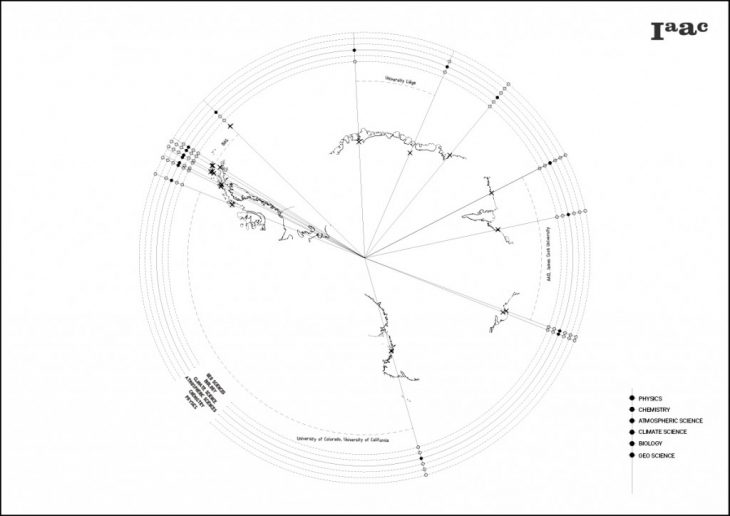
AntClim 21 collaborating research bases and institutes
The AntClim 21 project of SCAR studies the behavior of the Antarctic atmosphere, ocean and cryosphere to generate projections for the next 20 to 200 years and to understand the responses of the physical and biological systems.
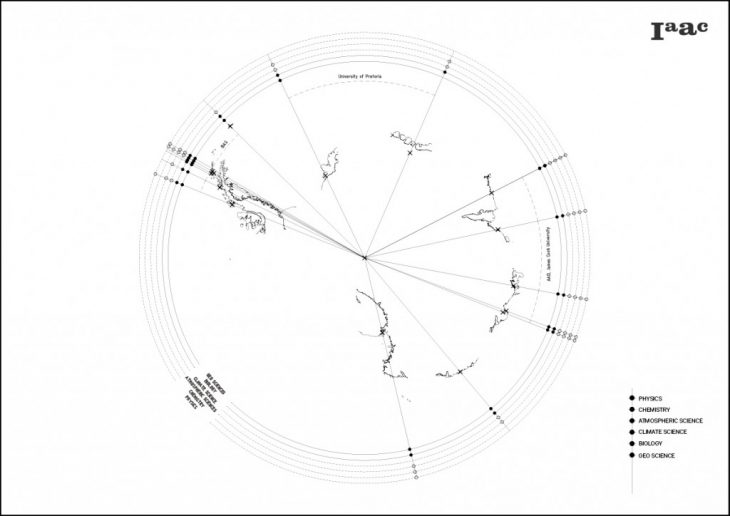
AntEco collaborating research bases and institutes
Anteco is another project that aims to study marine biodiversity for the conservation and management of Antarctic ecosystems.
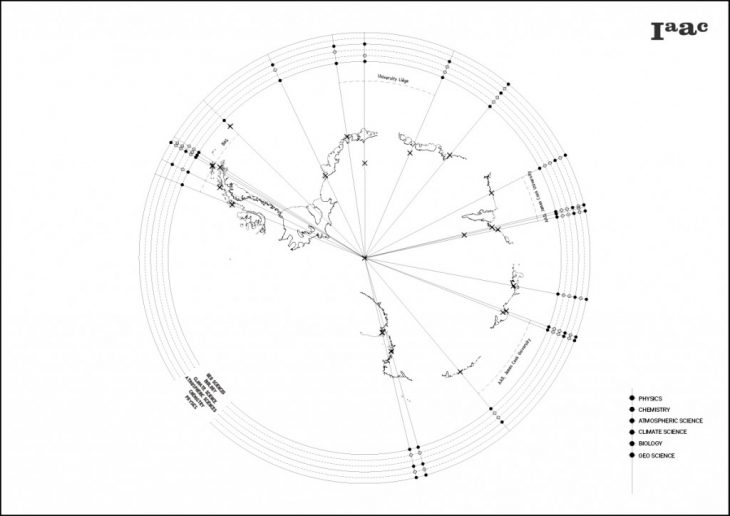
SERCE collaborating research bases and institutes
SERCE aims to study the relationship between the solid earth and ice masses to better constrain ice mass balance, ice dynamics and sea-level change in a warming world.
Research on urban-driver
On parallel lines, the project studies Migration as an urban driver to develop a framework where the learning from Antarctica can be applied to the contemporary city. While reflecting on Antarctica as a spatial model for the understanding of contemporary global interactions.
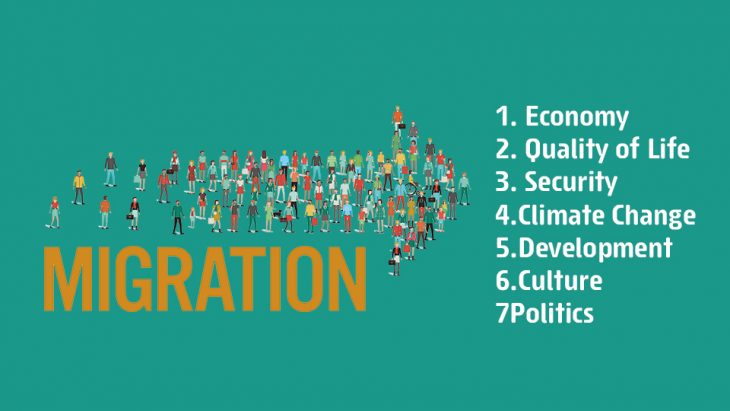
Migration, whether internal or international, has always been a major driving force for urbanization and bringing opportunities and challenges to cities, migrants and governments. Further, this research studies the influence as well as the role and impacts of seven urban parameters on this phenomenon.

Word clouds analyzing various articles published on migration
Analyzing articles from different sources regarding migration, and processing them in Python using ‘word cloud’ we could visualize the size of each word and indicate its frequency or importance. The idea was to be able to extract the most mentioned words in order to define the seven parameters.
</p>
Economics
Migration and remittances have both direct and indirect effects on the welfare of the population in the migrant-sending countries. A cross-country study of 71 developing countries found that a 10% increase in per capita official international remittances will lead to a 3.5% decline in the share of people living in poverty. (Adams and Page. 2005)
Quality of life
Migrants often move to ensure better opportunities for themselves or their families, like sending their child to a better, safer school or finding a job that would have not only a sufficient salary but also important benefits and career growth prospects.
Security
Despite the benefits of migration, public and policymakers the destination country usually believe that immigration can become an economic burden, as immigration is feared to lead to loss of jobs, heavy burden on public services, social tension and increased criminality (UNDP 2009, p. 70)
Climate Change
According to many pieces of research, in the first 21st-century climate change has become one of the biggest factors people being displaced from their birthplace. Climate change will transform more than 143 million people into “climate migrants” escaping crop failure, water scarcity, and sea-level rise, a new World Bank report concludes.
Development
Personal development or development, in general, is also considered as the drive for people to search for experiences. Exchange of information will lead to innovation.
Culture
Culture is considered a pull factor for someone to move to another country in the hope to learn other cultures and in the end, open more possibilities.
Politics
While national governments are the ones who make the decisions of immigration, city leaders are the ones who are the most affected by the decisions.
Antarctica, the first global city
</p>
The series of maps in the video illustrates the network that defines the city of Antarctica. The data provided by SCAR is categorized within seven parameters that regulate and in turn change the conditions of cities across the globe.
Development: SCAR connects 44 countries around the world, all seeking a constant development of science and technology within the Antarctic, these connections and research create a dependence and constant movement of information towards the host countries of the bases, but also towards anyone in the world that is interested in learning or using scientific resources produced in the Antarctic. The United States, the United Kingdom, China, and Russia are the countries that have the most relationships in fostering this development.
Economy: All SCAR member countries make an annual contribution not only to maintain research but also to protect the Antarctic ecosystem, countries with the largest number of bases and research such as the United States, United Kingdom, Russia, Argentina, and Chile are those who contribute most to the development and care of Antarctica.
Culture: Due to its geographical and climatic conditions, Antarctica has no inhabitants born within its territory, but each of the scientists carries their own customs, ideas, and culture to this territory, making it very diverse. The largest number of scientists is the bases are from the United States, United Kingdom, Russia, and China.
Quality of life: Resources for life in Antarctica are very difficult to produce, so scientists carry everything they need to do their research from their home countries. Argentina, Chile, Australia and South Africa are the countries that, being more waxed in this territory, provide more resources to all bases.
Politics: SCAR governs not only scientific research in Antarctica but has also created laws for the management and care of the territory. Meetings are held every year at SCAR headquarters in the United Kingdom to form the agenda for each year in the Antarctic. This agenda is carried out with all the members. In addition, in the SCAR headquarters, there is a committee appointed by all the countries working every day.
Climate Change: SCAR seeks the conservation of the entire Antarctic by which it regulates all human actions within this territory. The countries closest to the Antarctic are the ones that most support resources and resolutions for this care.
In the last map of this sequence, we see the conclusion of our work where we seek to show the connections of a city that has no limits that, thanks to science, global collaboration and technology has expanded its territory to reach a global condition.
Conclusion
The role of all stakeholders and city authorities in a city is fundamental to ensure integration and to accommodate all migrants within the urban context, migrants should also be included within the urban planning agenda.
Nowadays, immigration still carries negative perception, but from the research, the impact of migration is more inclined to give positive benefits for the overall society.
In the case of Antarctica, we can see that the whole world is working altogether in one place, for science, and ultimately for the humankind, since the natural environment of Antarctica has unique values for human beings.
A City of Global Collaboration is a project of IaaC, Institute for Advanced Architecture of Catalonia
developed at Master in City & Technology in (2019/2020) by:
Students: Aryo Dhaneswara, Byron Esteban Cadena Campos, Kushal Saraiya, Michelle Rodriguez.
Faculties: Mathilde Marengo, Edouard Cabay